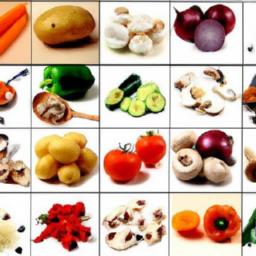Umami is one of the five basic tastes recognized by your tongue. It joins sweet, salty, sour, and bitter to create a full flavor experience. This savory taste shows up in many of the world’s most beloved dishes.
But what makes umami so unique? And how can you use it to improve your cooking?
What Is Umami?
Umami is a savory flavor caused by glutamates. These are amino acids found in protein-rich foods like meats, cheeses, and mushrooms. When these foods are cooked, aged, or fermented, the glutamates become more noticeable.
This effect is often enhanced through the Maillard reaction, a chemical process that occurs during browning and adds layers of flavor and aroma.
Unlike other basic tastes, umami works in the background. It boosts the overall flavor of a dish without standing out on its own. It creates a full, rich taste that lingers on the tongue and keeps you coming back for more.
A Discovery That Changed the Culinary World
In 1908, Japanese scientist Dr. Kikunae Ikeda identified the unique savory taste while studying dashi, a traditional Japanese soup stock made from seaweed. He found that the flavor came from glutamate and gave it the name “umami,” which means “delicious taste” in Japanese.
Dr. Ikeda’s research not only led to a greater understanding of taste but also to the commercial creation of monosodium glutamate (MSG), a seasoning still widely used to enhance flavor. Studies have shown that MSG can improve taste perception, especially in low-sodium meals.
Why Umami Matters in Cooking
Understanding umami helps you create more balanced, satisfying meals. By combining foods with natural glutamates, you can add depth and complexity to recipes without needing extra salt or fat.
- Boosts flavor in low-sodium dishes
- Adds depth to vegetarian or plant-based meals
- Balances sour, sweet, or bitter components
- Enhances the flavor of soups, stews, sauces, and grilled meats
Want to improve your weeknight meals without a lot of extra work? Start by using ingredients that naturally contain umami.
Where to Find Umami in Global Cuisine
- United States: Cheeseburgers with sautéed mushrooms and caramelized onions
- France: Niçoise salad made with tuna, anchovies, olives, and ripe tomatoes
- Japan: Sushi served with soy sauce and wasabi
- Argentina: Grilled steak topped with garlic-forward chimichurri
- Italy: Pasta with aged cheese, cured meats, and tomato-based sauces
Top Umami Ingredients by Category
Vegetables
- Tomatoes: Roasted, sun-dried, or cooked into sauces
- Mushrooms: Shiitake, porcini, or cremini
- Garlic and onions: Raw or caramelized
Condiments and Seasonings
- Soy sauce and tamari
- Fish sauce
- Miso paste
- Preserved lemons
Animal-Based Sources
- Aged cheeses: Parmesan, Gouda, blue cheese
- Cured meats: Bacon, prosciutto, ham
- Bone broth or meat stock
The Five Tastes and How Umami Complements Them
Umami is one of the five fundamental tastes. It complements the others by creating harmony and balance on the palate. Here’s how it works with each taste:
- Sweet + Umami: Teriyaki-glazed salmon or miso-roasted carrots
- Sour + Umami: Tomato sauces with vinegar or lemon juice
- Bitter + Umami: Broccoli rabe with Parmesan or kale with anchovy dressing
- Salty + Umami: Soy sauce on rice or Parmesan on French fries
How to Cook for Umami: Practical Techniques
- Slow roasting: Intensifies flavor in tomatoes, mushrooms, onions
- Toasting tomato paste: Adds depth to sauces and stews
- Making reductions: Concentrates savory notes in gravies and glazes
- Fermentation: Adds complexity and gut health benefits through foods like miso, kimchi, and soy sauce
- Layering: Combining multiple umami sources builds complexity
Umami Myths and Misunderstandings
- Myth: Umami means MSG. Truth: Umami exists naturally in many foods.
- Myth: Umami is artificial. Truth: It’s developed naturally through cooking and aging.
- Myth: Only meat has umami. Truth: Vegetables and plant-based sources can be equally rich.
Health and Nutrition Benefits of Umami-Rich Foods
- Bone broths contain collagen which supports joints and skin
- Fermented foods like miso and kimchi help gut health
- Umami allows for less added salt while keeping food flavorful
Quick Umami Boost Guide
| Dish Type | Easy Umami Boosters |
|---|---|
| Soups and Stews | Miso paste, beef or chicken stock, mushrooms |
| Stir-Fries | Soy sauce, garlic, shiitake mushrooms |
| Pasta | Parmesan cheese, sun-dried tomatoes, anchovy paste |
| Salads | Aged cheese, olives, cured meats |
| Grilled Meats | Barbecue sauce, Worcestershire, caramelized onions |
Recipe: Grilled Oysters with a Savory Twist
This appetizer is packed with umami thanks to smoked bacon, garlic, butter, and barbecue sauce.
Ingredients (Serves 6–8)
- 2 dozen oysters, shucked and on the half shell
- 8 tablespoons melted butter
- 5 cloves garlic, finely minced
- 5 slices cooked smoked bacon, chopped
- 2 cups barbecue sauce of your choice
- Kosher salt, to taste
- 1 tablespoon chopped parsley
- 1 tablespoon thinly sliced green onions
- 1 crusty French baguette, sliced for serving
Instructions
- Heat a grill to high.
- Place oyster shells directly on the hot grill grates.
- Add a teaspoon of melted butter to each shell, along with a pinch of salt and some garlic.
- Let the garlic cook until golden and fragrant.
- Add one oyster to each shell, then top with barbecue sauce.
- Grill for about two minutes, just until the sauce starts to bubble.
- Remove from heat and garnish with parsley and green onions.
- Serve with sliced baguette for dipping.
Tip: For a rustic and stable serving tray, place the oysters on a bed of rock salt arranged on a large platter.
Final Thoughts and Next Steps
Umami is more than just a trendy word. It’s a core part of how we experience flavor. When used properly, it brings out the best in surrounding ingredients and creates meals that feel full and complete.
If you’re looking to reduce sodium but still enjoy bold flavor, umami can help. And if you’re aiming for restaurant-quality dishes at home, mastering umami is a great place to start.
Want to keep learning? Download our free Umami Ingredient Guide or try adding one new umami-rich ingredient to your next meal.





